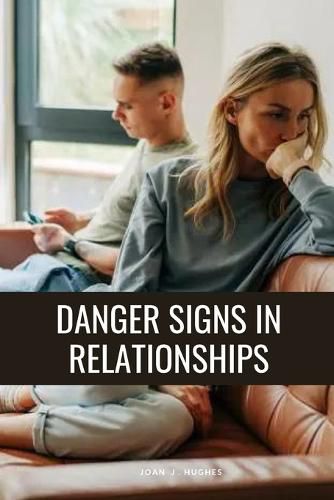Readings Newsletter
Become a Readings Member to make your shopping experience even easier.
Sign in or sign up for free!
You’re not far away from qualifying for FREE standard shipping within Australia
You’ve qualified for FREE standard shipping within Australia
The cart is loading…






This title is printed to order. This book may have been self-published. If so, we cannot guarantee the quality of the content. In the main most books will have gone through the editing process however some may not. We therefore suggest that you be aware of this before ordering this book. If in doubt check either the author or publisher’s details as we are unable to accept any returns unless they are faulty. Please contact us if you have any questions.
Danger signs in romantic relationships signal relational distress, dissolution, and dissatisfaction (Gottman, 1993; Markman, Stanley, &Blumberg, 2010b). Littleis known about how mindfulness may improve danger sign identificationand how important experiences may be influential in detection including one'sbetrayal trauma, interparental conflict, social isolation and attachment style. Participantsviewed videosof couples interacting and were instructed to identify negative interaction patterns through a digital analogue assessment viakey presse.sHalf of participants were randomized toa mindfulness condition. Resultsrevealed that mindfulness engagement was significantly related to the identificationof danger signs, as compared tothe control group. Additionally, results showed that higher reports of betrayal trauma and interparental conflict were significantly negatively associated with ability to recognize danger signs, includingmindfully-induced participants. Interetsingly, insecure attachment was significantlyrelated to greater danger sign identification for both the main effect and moderation, and social isolationappeared insignificant. Importantly, this study lends support for the notion that early exposure to unhealthy relationship dynamics may be influential for future recognition of danger signs in intimate partnerships, and that mindfulness appears toplay a key role in detection.
$9.00 standard shipping within Australia
FREE standard shipping within Australia for orders over $100.00
Express & International shipping calculated at checkout
This title is printed to order. This book may have been self-published. If so, we cannot guarantee the quality of the content. In the main most books will have gone through the editing process however some may not. We therefore suggest that you be aware of this before ordering this book. If in doubt check either the author or publisher’s details as we are unable to accept any returns unless they are faulty. Please contact us if you have any questions.
Danger signs in romantic relationships signal relational distress, dissolution, and dissatisfaction (Gottman, 1993; Markman, Stanley, &Blumberg, 2010b). Littleis known about how mindfulness may improve danger sign identificationand how important experiences may be influential in detection including one'sbetrayal trauma, interparental conflict, social isolation and attachment style. Participantsviewed videosof couples interacting and were instructed to identify negative interaction patterns through a digital analogue assessment viakey presse.sHalf of participants were randomized toa mindfulness condition. Resultsrevealed that mindfulness engagement was significantly related to the identificationof danger signs, as compared tothe control group. Additionally, results showed that higher reports of betrayal trauma and interparental conflict were significantly negatively associated with ability to recognize danger signs, includingmindfully-induced participants. Interetsingly, insecure attachment was significantlyrelated to greater danger sign identification for both the main effect and moderation, and social isolationappeared insignificant. Importantly, this study lends support for the notion that early exposure to unhealthy relationship dynamics may be influential for future recognition of danger signs in intimate partnerships, and that mindfulness appears toplay a key role in detection.